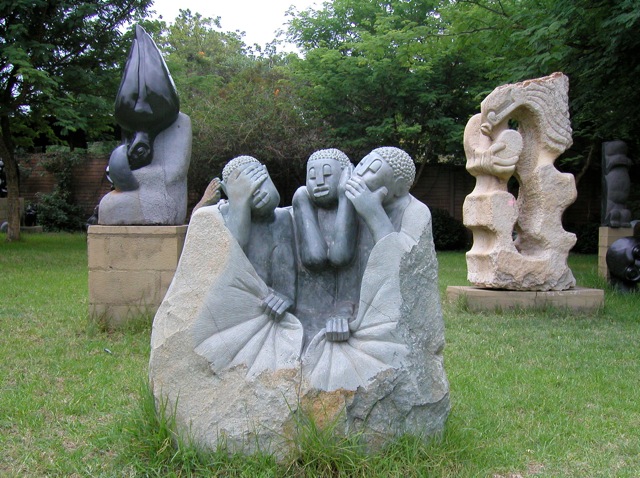


ONE of the country’s fore-most arts and sculpture village, Chapungu Sculpture Park is set to return reviving hope for scores of artists who have been affected by its liquidation last year. Renovations are underway to the main office building of the arts village indicating structural changes and sprucing of the centre.
Roy Guthrie, owner of the arts village says plans are afoot to re-open the place to artists and art lovers. “We hope to open with a celebration honouring over 80 artists who have died and have been part of the village over its 20 years life-span,” said Guthrie.
Chapungu Village and Sculpture Park was a dynamic centre of the world famous Zimbabwean stone sculpture. It formed the movement that emerged in the 1950s under the tutelage of Frank McEwen, the founding director of the National Art Gallery of Zimbabwe, who established the Workshop School that is synonymous with great sculptors such as Mukomberanwa, Muteki, Mukarombwa, Takawira, Ndandarika and Mubayi, to name but a few.
To fill in the departure of McEwen, a number of commercial galleries opened in competition with National Gallery in the now lucrative trade and the most prominent was Gallery Shona which was run by one Roy Guthrie. Around 1980, he purchased a vast tract of land in Msasa, part of which was Doon Estate where he established Chapungu Village and Sculpture Park with a typical village flavour to it. He expanded quickly, nurturing new talent that became an integral part of Zimbabwean art.
“The benefits to artists were substantial and we hope to pursue that goal again. Resources permitting we will be back to the early years,”said Roy Guthrie. Over the years many artists hailing from the centre earned a constant income and some of them bought substantial properties in the suburbs of Harare and Ruwa area. In these areas and high-density suburbs, they set up studios, which welcomed young talent as assistants and apprentices. The pressure to produce reduced one-on-one mentorship in favour of high production and even larger pieces. This perhaps was the beginning of the end for sculpture in Zimbabwe.
When the financial woes of the 80s and 90s set in, the village was not spared creating challenges for the centre. The same woes touched the dealers, too, sending Guthrie into a brief involuntary exile. Due to Roy’s speedy exit to the States where he has been organising exhibitions, the management committee left in charge failed to maintain previously high aesthetic standards, and the quality of the work on display plummeted. Finally, despite bail-out efforts by Guthrie, Chapungu went into liquidation in October 2012 and the remaining sculptures were sold off and Harare lost its respectable sculpture outlet
Collection, preservation, promotion, encouragement and documentation have been Chapungu’s main functions since 1980. The policy of acquiring major works for the permanent collection has enabled the park to mount many of the most important and comprehensive exhibitions of past years. It has also meant that these works remain as sculptural heritage of Zimbabwe. – Stephen Tsoroti